Icse class 6 biology question answers-In this post we will solve the question answer of icse class 6 biology question answers book by viva education where we discuss the Flowcharts/reactions of fertilisation, photosynthesis & Germination of seed in detail. apart from that, we will also cover the long answer type question of icse class 6 biology chapter 1 – Plant
Click here for answers to other questions given in the chapter Plant life, Icse class 6 chapter-1
Icse class 6 biology chapter-1 (Plant Life)
Icse class 6 biology question answers-Long answer
Let’s first discuss the Long answer type questions of icse class 6 biology book of viva education and then we will proceed to Flowcharts/reactions of fertilisation, photosynthesis & Germination of seeds one by one.
Also Read
- Great fun with grammar, class 6 chapter-1
- Great fun with grammar, class 6 chapter-2
- Great fun with grammar,class 6 chapter-3
- Great fun with grammar, Class 6 chapter-4
- Great fun with grammar, class 6 Chapter-5
Icse class 6 biology question answers- Plant life
1. What is a leaf? Describe different parts of a leaf with the help of a suitable diagram.
Answer- A leaf is a part of the plant that is usually thin, flat and green in colour that develops from the node present in the stem. The main functions of a leaf are 1) manufacturing of food, 2)transpiration and 3)exchange of gases.
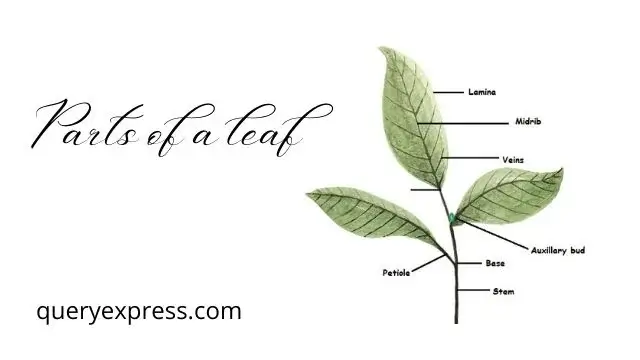
A leaf has four main parts.
1. Leaf blade or lamina: it is the flat, thin, green and broad part of the leaf.
2. Leaf stalk or petiole: It is the short, narrow and cylindrical part of the leaf that joins the lamina to the stem.
3. Midrib: The petiole continues in the lamina as a thick vein in the middle. This vein is called midrib. it extends from the petiole up to the tip of a leaf.
4. Base: The petiole is attached to the stem at a slightly swollen point called the leaf base.
Class 6 biology chapter 1-Plant life
2. What are the different parts of a leaf? Write their Important functions
Answer- A flower is the reproductive part of a plant. It is the most beautiful and most colourful part of a plant that develops from the floral buds on the stem. The function of a flower is to produce fruit and seeds.
Parts of a Flower
A flower has four parts
- calyx,
- corolla,
- androecium and
- gynoecium.
These four parts are arranged in four whorls or concentric rings.
Calyx: It is the outermost whorl that contains sepals which are basically green leaf-like structures. Sepals cover and protect the inner parts of a flower during its bud stage.
Corolla: It is the second whorl of the flower that contains petals which are bright in colour and pr produces a smell that attracts insects like bees and butterflies which help in pollination. Petals also protect the reproductive parts of a flower.
Androecium: Androecium is the male reproductive part of the flower that consists of stamens. It is the third whorl of a flower. A stamen has two parts.
• A thin, long and narrow stalk called filament
• A small two-lobed structure called anther which consists of fine particles called pollen grains. Male reproductive cells or gametes are present inside pollen grains.
Gynoecium: It is the innermost whorl of a flower. The gynoecium is the female reproductive part of a flower that consists of carpels or pistils.
A carpel has three parts.
• A swollen part situated at the base of the carpel is called the ovary. It contains small, round egg-like structures called ovules. Female reproductive cells or gametes are present inside ovules.
• A tube-like structure arising from the ovary called style
• A disc-like expanded part at the top of the style called stigma
Icse class 6 biology question answers- chapter 1
3. What is a fruit? Name various parts of a fruit.
Fruit is nothing but a mature or ripened ovary that bears seeds. most of the fruits are edible and have high nutrition.
The fruit consists of two parts—pericarp (fruit wall) and seed. Pericarp: It develops from the wall of the ovary. It may be soft and fleshy, as in tomato and papaya, or dry and thin as in gram. The pericarp consists of three parts.
1- The outermost thin layer is called epicarp.
2-The sweet and fleshy middle part is called mesocarp.
3-The innermost hard part is called the endocarp. It contains seeds.
Icse class 6 biology question answers-viva education
4. Write a note on vegetative propagation in leaves.
Answer- Vegetative propagation is an asexual reproduction process where a vegetative part of a plant like a root, leaf or stem is used to reproduce a new plant by itself. This type of propagation occurs in plants like Bryophyllum and Begonia where buds are present in the notches on the margins of leaves and Plantlets develop from these buds. They get detached from the parent plant and develop into new plants. Even if a leaf falls on moist soil, the buds develop into new plantlets.
Icse class 6 biology plant life question answers-
5. Describe the structure of a seed with the help of a diagram. Explain how it germinates.
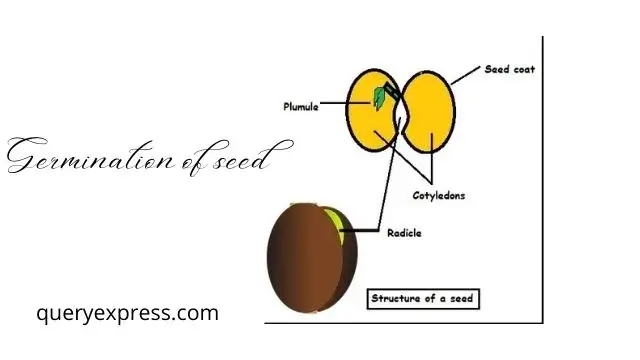
The seed has an outer covering called the seed coat. A baby plant called an embryo is present inside the seed coat. An embryo consists of three parts.
• The plumule which develops into a shoot
• The radicle which develops into a root
• The cotyledons store reserved food material and develop into the first leaves.
Germination of seed
When seeds get suitable conditions like temperature, water, air and light, they germinate to produce a new plant. An embryo lies dormant in a seed. In suitable conditions, the embryo becomes active and develops into a small seedling. The process by which the dormant embryo within the seed becomes active and grows into a new plant is known as germination.
During germination, the seed swells up due to the absorption of water that causes the seed coat becomes soft and burst. the radicle then quickly elongates and grows downwards that giving rise to the primary root while the plumule comes out and grows and gives rise to the shoot. the cotyledon forms the first leaf of a plant
Icse class 6 biology question answers-Flowcharts and reactions
Show the following processes in the form of flowcharts/reactions
- Fertilisation of seed
- Photosynthesis
- Germination of seed
flowchart of Fertilisation
The fusion of the male gamete with the female gamete is called fertilisation .in this process a pollen grain reaches the stigma where it germinates to produce a long pollen tube. this pollen tube grows through the style to reach the ovule that presents inside the ovary that carries male gametes. in the ovary, the male cell present inside the pollen grain unites with the egg cell inside the ovule. due to this, a single cell is produced which is called a zygote. This entire process is called fertilisation.
After fertilisation, the ovule develops into a seed and the ovary becomes a fruit and others like sepals and petals fall off.
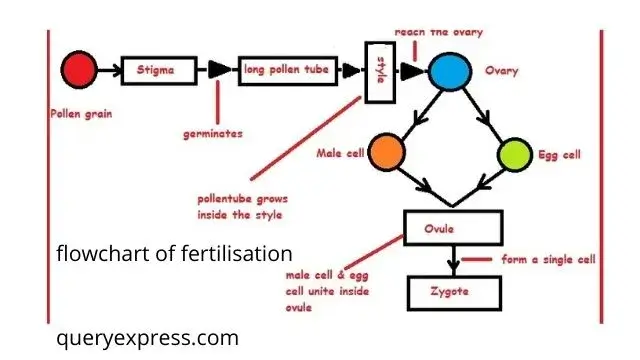
Flowchart of Photosynthesis
The process by which green leaves that contain chlorophyll prepare their food with the help of sunlight, carbon dioxide and water is called photosynthesis. plants take carbon dioxide through the pores present on the lower surface of the leaves during the daytime and prepare their food with the help of sunlight and water.
Carbon dioxide + Water —————– Glucose + Oxygen
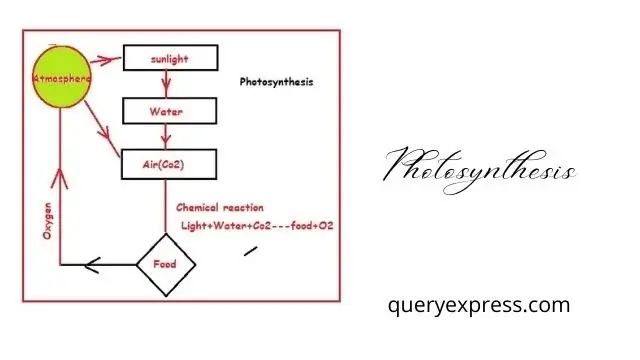
Flowchart of Germination of seed
When seeds get suitable conditions like temperature, water, air and light, they germinate to produce a new plant. An embryo lies dormant in a seed. In suitable conditions, the embryo becomes active and develops into a small seedling. The process by which the dormant embryo within the seed becomes active and grows into a new plant is known as germination.
During germination, the seed swells up due to the absorption of water that causes the seed coat becomes soft and burst. the radicle then quickly elongates and grows downwards that giving rise to the primary root while the plumule comes out and grows and gives rise to the shoot. the cotyledon forms the first leaf of a plant
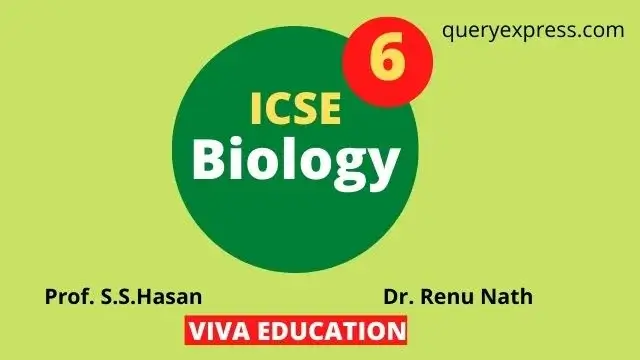
1 thought on “Icse class 6 biology question answers|Plant life|viva education”